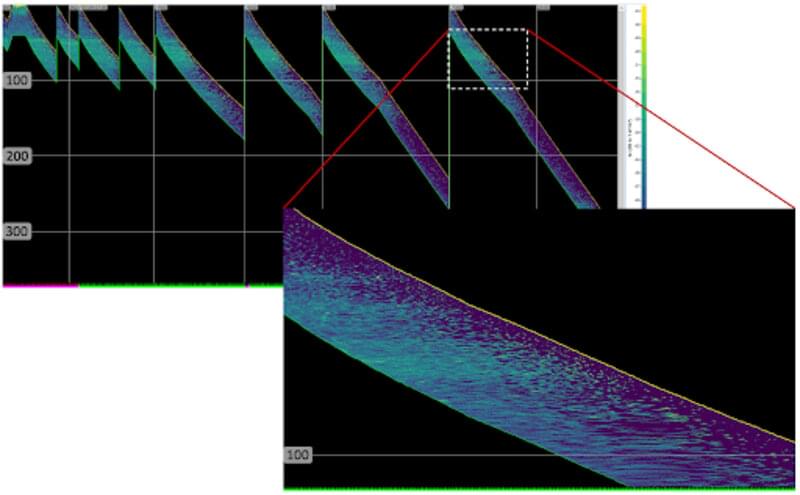

Figure 8. Echogram from the Glider’s Simrad EK80 Wide Band Transceiver “Mini” echosounder from 1700 to 2200 UTC on July 29, 2021 (upper panel). There is a prominent scattering layer at 50 meters (164 feet), and a faint layer at 250 meters (820 feet). The white, dashed box indicates a zoomed in view (lower panel) of the echogram at 2200 UTC on July 29. As the glider approaches the scattering layers, the layer appearance changes from a fuzzy cloud with a mix of organisms (left side of the lower right panel) to individual organisms and scatters discernable as dots and traces, which allow for closer examination of individual acoustic target strengths (right side of lower right panel). For all dives, the echosounder was configured to collect data to a 50 meter (164 foot) range.